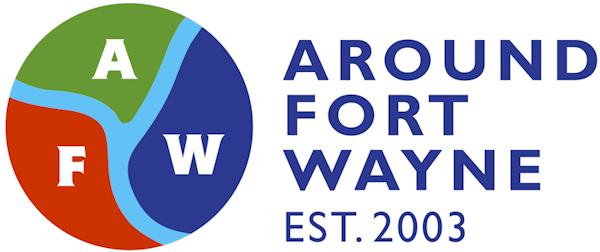![]()
News release from Trine University:
Trine president share thoughts on college costs
By Earl D. Brooks II, Ph.D., president of Trine University
Today, more than ever before, we are hearing about the cost of a college education. After working more than 30 years in higher education, I’d like to give you a view of the numbers you are seeing, the reality of debt and the long-term benefits of an education. College is one of the most important investments most people will make in their lifetimes. Graduates from institutions around the globe are launching successful careers, impacting their communities and creating new jobs. Colleges and universities are increasing aid to make education affordable. Studies show that students are seeing returns on their investments.
According to the Indiana Commission for Higher Education, the average Indiana student graduates with $27,000 in debt. At Trine University, the average student loan debt (for May 2011 graduates) is $22,156. Trine is ranked by U.S. News and World Report as being one of the best colleges in the Midwest for students graduating with the least amount of debt. The amount of debt incurred by Trine graduates, in most cases, is less than students graduating from public institutions.
To reduce possible student loan debt, you might think the best choice is to go to the college with the cheapest sticker price, namely a state school or community college. I would encourage you to dig a little deeper. For example, thanks to the support of dedicated donors, many private colleges and universities can offer institutional aid to reduce the cost of your education, bringing the cost of a private education equal to or less than that of a public institution. Trine’s tuition for the 2012-2013 academic year is $27,660 and $29,750 (engineering). The average gift (from all sources) is $22,549 per year per student. While costs vary from student to student, if you take the average gift and subtract it from Trine’s sticker price, tuition drops to $5,111 and $7,201 (engineering).
Most students who graduate with less or no debt began taking concurrent enrollment (also known as dual credit) classes in high school. They also took classes during summer vacations, did not change their majors or schools and maintained grade-point averages above 3.0. Many also took advanced placement (AP) classes and earned CLEP (college level entrance placement) credits prior to entering college.
Future students should consider putting together a plan so they can graduate in less than four years. Before I continue, I should point out that graduating early from some programs is less possible. For example, our engineering students have to adhere to accreditation standards. We also encourage them to take internships or co-ops, which can sometimes delay graduation, but greatly enhance their chances of securing jobs.
Some people are opposed to the idea of graduating in less than four years because they think students should have “the college experience” before they head into “the real world.” Others think the demands of earning a bachelor’s degree early puts undue stress on students. The graduates of our abbreviated programs post-World War II are some of our most successful and most committed supporters of the university today.
This past year, some talented Trine graduates earned bachelor’s degrees in only three years. This put them in positions to enter graduate school or the workforce a year early and start earning money. After taking the cost of Trine’s tuition and subtracting the financial aid package for each early graduate, we found that those graduates saved between $9,300 and $19,000, plus the added cost of books and transportation (and in some cases, room and board). How did they do it? They sought out their academic advisors and developed a collaborative plan. Some came to Trine with college credits they earned through Trine Middle College as high school students. Others took summer and online courses.
Trine University is the only private institution in the state to be included in the Commission for Higher Education Statewide Transfer and Articulation Committee’s Preferred Dual Credit Provider List. Through Trine Middle College, high school students can take a variety of classes at their high school (if the school is a participant) at rates cheaper than any community college, public school or private institution in the state. Some middle college students have accumulated over 40 credit hours, which can be transferred to many colleges across the country. Like other institutions, Trine also offers summer and online courses to all students – regardless of collegiate affiliation – at a significantly reduced rate, representing a savings of 50 to 60 percent.
Finally, you need to ask questions about your return on investment. In 2011, 91 percent of Trine University’s graduates had jobs or were enrolled in graduate school within six months of graduation. Our results for 2012 graduates will be released later this year, but I can already tell you that many of them are working or packing for graduate school. Companies such as GE Aviation, Honda, Cummins, Chesapeake Energy, Beckman Coulter, Rockwell Automation, Caterpillar, Symmetry Medical, BAE Systems and more have already hired graduates. Some graduates are pursuing master’s and doctoral degrees at Stanford, Yale, University of Michigan, the Air Force Institute of Technology and more.
Some would have you believe a college degree isn’t worth the investment. The earning power of an undergraduate degree is far greater than only a high school diploma or associate degree. A 2011 study by Georgetown University Center on Education and the Workforce says the value of a college degree is increasing. A story on Lumina Foundation’s website said, “According to the study, individuals with a bachelor’s degree now make 84 percent more over a lifetime than those with only a high school diploma, up from 75 percent in 1999.” Established in Indianapolis in 2000, Lumina is among the nation’s top 40 private foundations and is committed to increasing the number of students who enroll and graduate from college.
This year, Trine is awarding over $20 million in institutional aid to its students. Parents and students must understand the investment they are making when they head to college, as well as the investment an institution makes in each student. College can be and is affordable, and multiple institutions around the state, including Trine, are working to help students earn meaningful, applicable degrees. Ask colleges about institutional aid, scholarship opportunities and grants. Ask your high school whether concurrent enrollment classes are offered. Push yourself and take summer and online courses.
Trine University is committed to making an affordable, quality education attainable. Our graduates see returns on their investments. So, when you think about college, don’t think of it as a debt; think of it as an investment with exponential earning potential.



